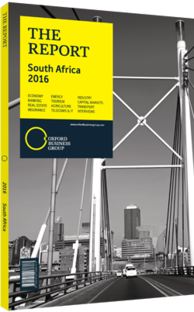Donna Oosthuyse, Director of Capital Markets, Johannesburg Stock Exchange: Interview

Interview: Donna Oosthuyse
The JSE has performed well over the past year in spite of muted macroeconomic growth. To what do you attribute this divergence?
DONNA OOSTHUYSE: The perceived disconnect between the performance of the economy and that of the country’s capital markets can be attributed to many factors. First, it is important to note that the level of development in the capital markets and financial services of South Africa is sophisticated and on par with that of developed economies. Therefore we share a lot of drivers with them, while at the same time addressing the needs of an emerging market through tailored innovations and market development.
The South African capital markets are disintermediated. This is easily measured by comparing the assets of non-bank financial institutions, which are about R8.5trn ($734.4bn), with those of banks, which are around R5trn ($432bn). This shows the market is deep and liquid. As the exchange has been around for 130 years, we have a well developed market infrastructure and robust regulatory framework. Ranked second in securities regulation and first in local equity capital raising globally, by the World Economic Forum, we continue to ensure our listing requirements and regulatory framework are competitive.
In summary, our capital markets are well regulated, deep and liquid with certainty of settlement and clearing. Because of these factors and the well developed nature of our capital markets, South Africa is often used as a proxy for other emerging markets. This is evident in the foreign exchange market. Additionally, some of our most heavily traded counters are companies that have significant operations in other parts of the world, or offshore exposure. About 30-40% of trade on a daily basis is conducted by international investors. With a relatively high share of foreign participation, we can be open to factors such as the amount of liquidity we have in global markets currently. There are concerns about global equity markets due to the tapering of US quantitative easing (QE) and pending US interest rate rise. However, no one expected Europe and Japan to embark on their QE programmes just as the US finished theirs. Therefore, one of the reasons we have a high valuation in equity markets is excess liquidity, aided by relatively low interest rates globally. While the US interest rate take-off and China’s slowdown might cause some rebalancing of portfolio investments, there will still be a strong case for Africa, given its rising population and need for infrastructure development.
What can be done to facilitate new listings?
OOSTHUYSE: Listings and initial public offerings tend to follow the general economic cycle. Companies raise cash for investment when they see growth opportunities. In 2014 the JSE saw 24 listings, the first time we exceeded 20 in a single year since 2008. Property and infrastructure sectors are popular, and more small and medium enterprises (SMEs) are listing on the JSE’s alternative public equity exchange, the AltX. As banks will have a finite ability to finance the vast amount of infrastructure projects on the continent due to capital and liquidity ratios, we must find ways to channel those to the capital markets.
The AltX is critical for the development of the SME sector and entrepreneurism, as one of the constraints to growth is access to capital. Since its launch, we’ve had over 115 listings, with 30% migrating to list on the main board. This high ratio proves the incubation theme of the AltX, with another noticeable percentage of firms being bought out.
To grow listings, we will foster the development of an AltX ecosystem, with analysts covering stocks and building an information portal for investors. This will be done in tandem with other investments in trading and clearing technology, with innovations to enable capital raising through debt in terms of listing requirements, trading mechanisms and valuations.
You have reached the limit of premium articles you can view for free.
Choose from the options below to purchase print or digital editions of our Reports. You can also purchase a website subscription giving you unlimited access to all of our Reports online for 12 months.
If you have already purchased this Report or have a website subscription, please login to continue.

